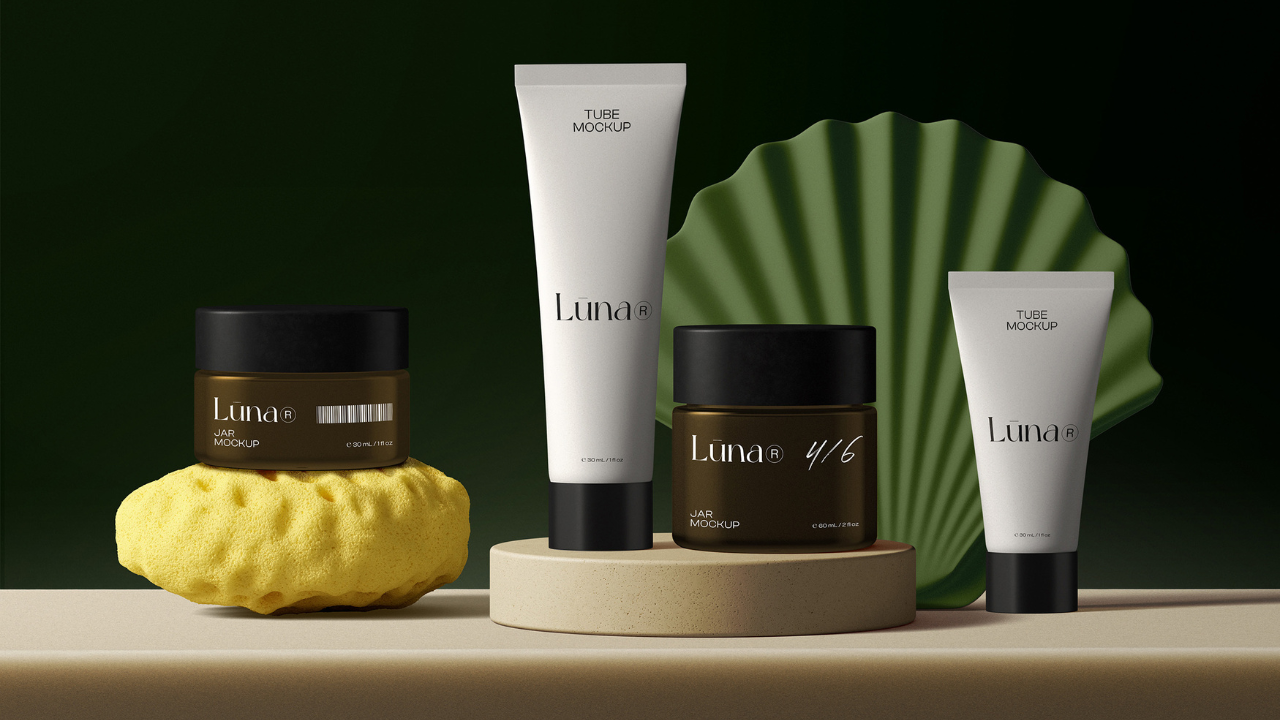Cosmetic tube packaging is vital for the cosmetic industry to address three fundamental needs: product protection, convenient applications, and brand expression. The two basic manufacturing operations in the cosmetic tube production business are injection molding and extrusion. Most cosmetic tube manufacturers have two varying production processes. Both provide specific benefits and constraints that affect product quality, design possibilities, and environmental effects. Brands need to understand these production methods to achieve the optimal package solution.
Understanding Injection Molding
The process of injection molding produces plastic by melting it until it occupies the mold forms prior to the hardening of the plastic. The manufacturing industry depends on this process to produce accurate parts, including tube caps, and to produce dispensers and complex packaging elements.
Advantages of Injection Molding
- The injection molding process delivers precise tubes that maintain exact dimensions because it consistently produces complex branded designs.
- The production method generates tubes with outstanding surface quality, resulting in a better cosmetic appearance.
- Brand recognition is improved by injection molding because the process allows brands to have logos with exclusive textures and various design elements to make the products more beautiful.
- Businesses that employ injection molding technology can utilize a range of plastic materials that include PCR (post-consumer recycled) plastics and biodegradable resins.
Limitations of Injection Molding
- Molding tooling costs are high enough to prevent the use of this method for producing small batches.
- Mold preparation, together with process optimization, requires substantial time that limits production flexibility when rapid changes are needed.
Understanding Extrusion
The extrusion manufacturing process applies pressure to force molten plastic through a die in order to produce endless plastic tubes. The tubes undergo final design specifications through cutting and shaping before sealing operations are performed. The manufacturing process of squeeze tubes for skin care, dental care, and pharmaceutical products depends primarily on this method.
Advantages of Extrusion
- Extrusion yields superior economic advantages when producing cosmetic tubes in large quantities because it runs continuously to generate tubes.
- The production method generates minimal waste materials, thus making it an environmentally friendly option for sustainable packaging.
- Extrusion-produced tubes maintain both strength and flexibility properties that ensure easy dispensing of thick, viscous skincare products.
- The production method creates strong yet lightweight tubes that give users improved convenience and reduce shipping costs.
Limitations of Extrusion
- The complexity of features available during extrusion design remains limited since effective implementation of complicated details and brand elements happens most readily through injection molding production.
- Surface Imperfections represent a minor manufacturing restriction in extrusion-produced tubes since they display minor thickness inconsistencies and surface roughness variations.
- Brand consistency demands additional precision requirements for product printing as well as sealing procedures that follow the production phase.
The Manufacturing Process of Cosmetic Tubes
The cosmetic tube manufacturing process optimizes injection molding and extrusion technologies because each technology addresses unique production needs. Highly detailed packaging should be manufactured via injection molding since extrusion is best for producing packaging at lower costs on a large scale. The manufacturing decision between these methods depends on how well brands need to align their design improvements with their budget, sustainability priorities, and manufacturing specifications.
Choosing the Right Manufacturing Process
- The decision between injection molding and extrusion depends on several key points, such as product requirements, financial needs, product complexity levels, and environmental standards.
- High-end customized packaging manufacturing relies on injection molding because it produces exact product features with complex designs that deliver superior quality finished results.
- Mass production requirements and cost-effectiveness are best achieved through extrusion.
- Both production methods enable sustainable material creation, yet extrusion generates less waste during production.
The Comparison of Manufacturing Trade-offs
Cosmetic tube manufacturers must weigh three essential aspects between injection molding and extrusion to determine their production approach. The manufacturing process of injection molding delivers precise complex designs with excellent aesthetic results that are appropriate for luxury packaging. The manufacturing process demands larger initial expenses and longer initial preparation periods. The extrusion production process delivers economical mass-level manufacturing with minimal material waste to produce strong, flexible packaging. Extrusion functions as a sustainable manufacturing method for large-scale production even though it does not provide intricate design capabilities.
Conclusion
Cosmetic tube manufacturing through extrusion and injection molding provides both specific benefits and production hurdles to manufacturing facilities. The precision and attractive results of injection molding surpass extrusion, but this process becomes more costly for high-volume product production. Better decision-making power for cosmetic brands emerges from their knowledge of the unique features of these manufacturing methods for selecting product packaging. Branding choices for suitable production strategies can be made by reviewing manufacturing costs, design needs, and sustainable solutions to optimize product appearance and consumer attraction.


